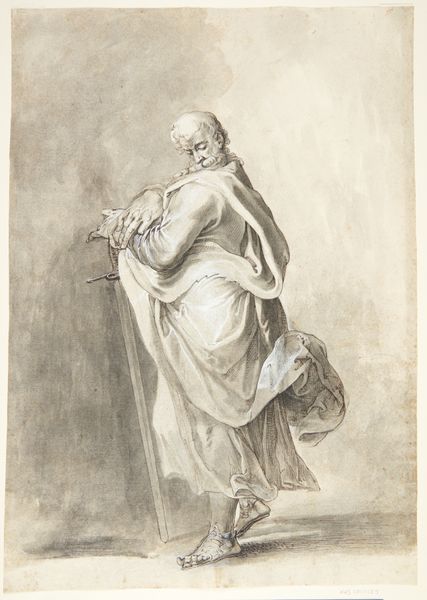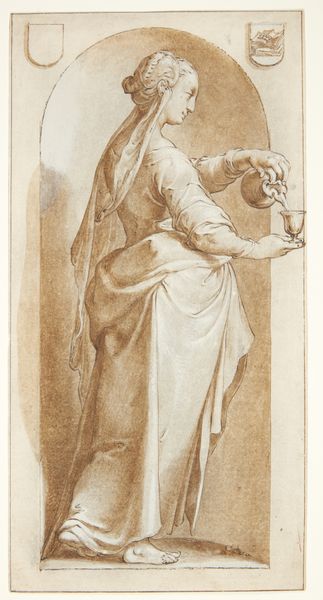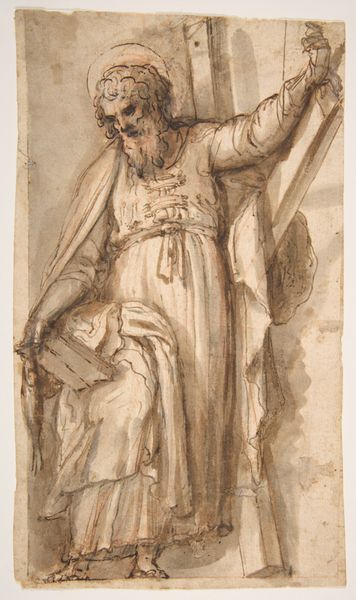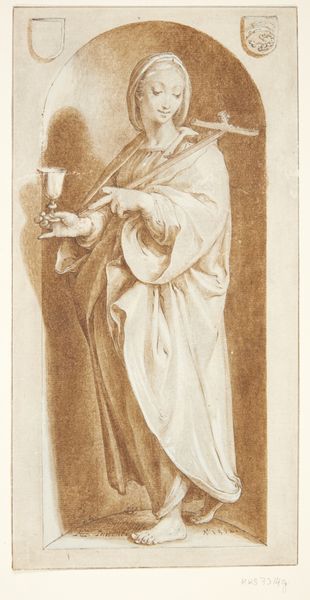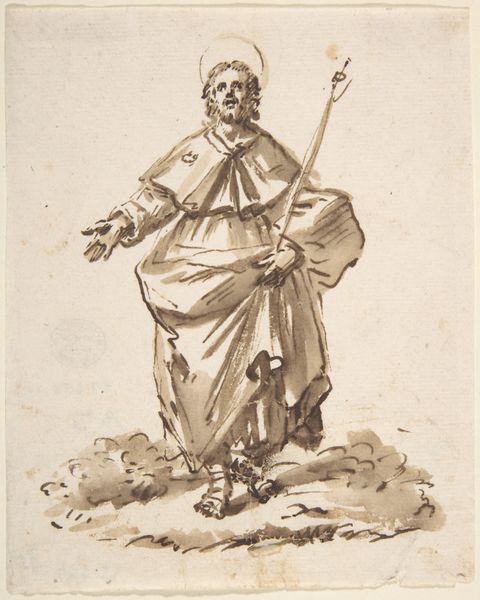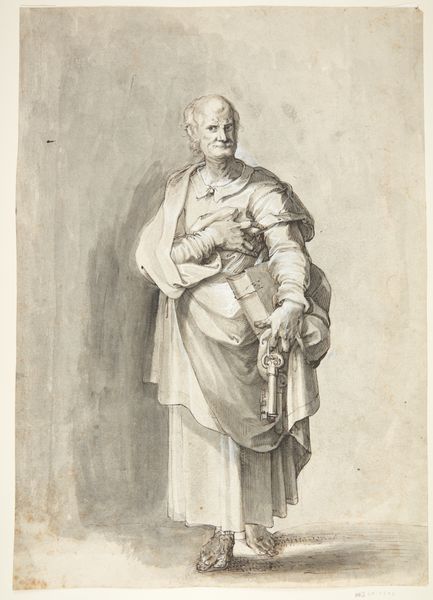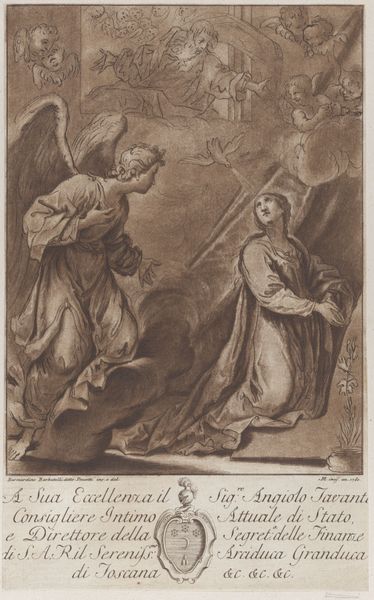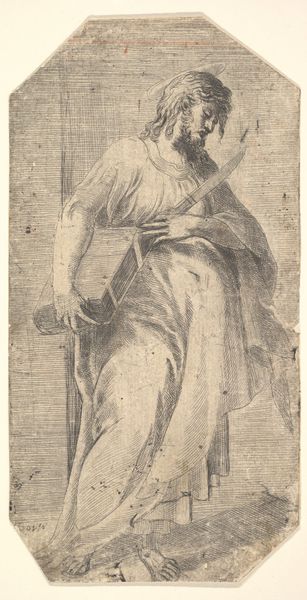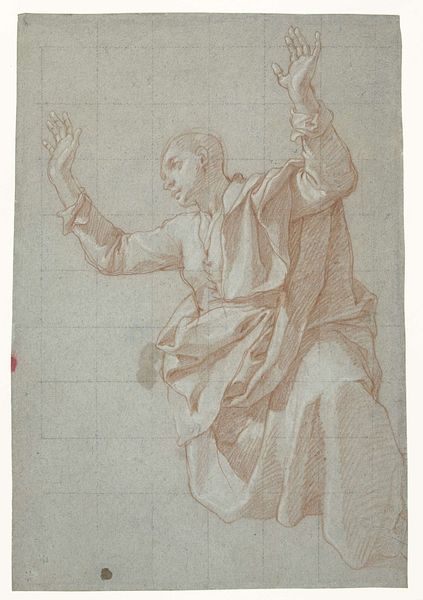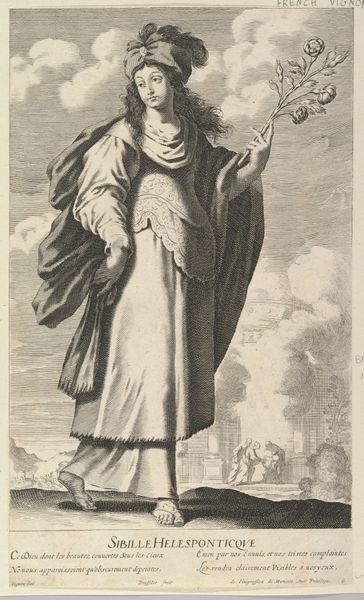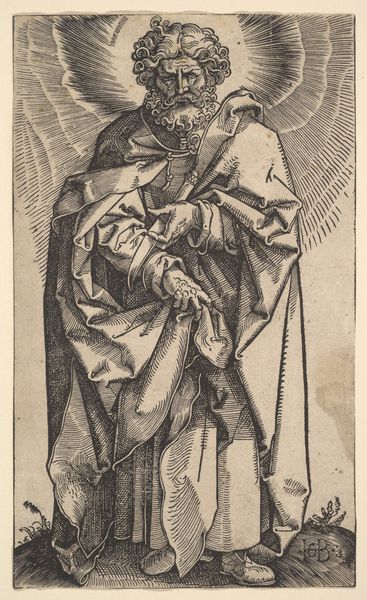
drawing
#
drawing
#
toned paper
#
light pencil work
#
pencil sketch
#
charcoal drawing
#
charcoal art
#
pencil drawing
#
coloured pencil
#
portrait drawing
#
watercolour illustration
#
watercolor
Dimensions: 420 mm (height) x 294 mm (width) (bladmaal)
Editor: Here we have Matthäus Gundelach's drawing "Jesus og de 12 apostle: Philip," dating from between 1566 and 1654. It’s a delicate sketch on toned paper depicting Philip with a cross, but something about the subtle shading makes it seem incomplete, almost like a preliminary study. How do you interpret this work within its historical context? Curator: That's a perceptive observation about the incomplete feeling. Considering the period, we must acknowledge the potent role of religious institutions. Gundelach likely produced this drawing not just as an aesthetic exercise but potentially as preparatory work for a larger commission or a series meant to circulate within a specific religious or even political network. How do you think the Reformation or Counter-Reformation movements might have affected the purpose of art like this? Editor: That’s fascinating. I hadn't thought about it as possibly having a political dimension! I guess during that era, art could very well function as propaganda or as a reaffirmation of faith, depending on who commissioned it. I can see how a series depicting the apostles could be used to reinforce specific theological positions. Curator: Exactly! The choice of depicting Philip, the cross he holds, the very *style* of drawing - all become points of potential interpretation in that light. This wasn't simply art for art's sake. Gundelach would've been keenly aware of how this image might be perceived. Editor: This makes me think about the art market in the 16th and 17th centuries. Who was consuming art like this? Was it mainly the Church, wealthy patrons, or did prints make it more accessible to a wider audience? Curator: It’s a tiered system. Grand paintings are usually commissioned by institutions and powerful families. But sketches like this? They might have been reproduced as engravings, yes, spreading ideas more widely. That circulation becomes crucial for understanding its cultural impact. Editor: I had just considered its formal and aesthetic qualities. Curator: Right! By acknowledging how socio-political forces influenced artistic choices and the subsequent public role of an image like this, we've transformed our initial viewing of Gundelach's Philip from a seemingly straightforward drawing into something far more meaningful. Editor: I never looked at art with such historical lenses. Thanks a lot.
Comments
No comments
Be the first to comment and join the conversation on the ultimate creative platform.
